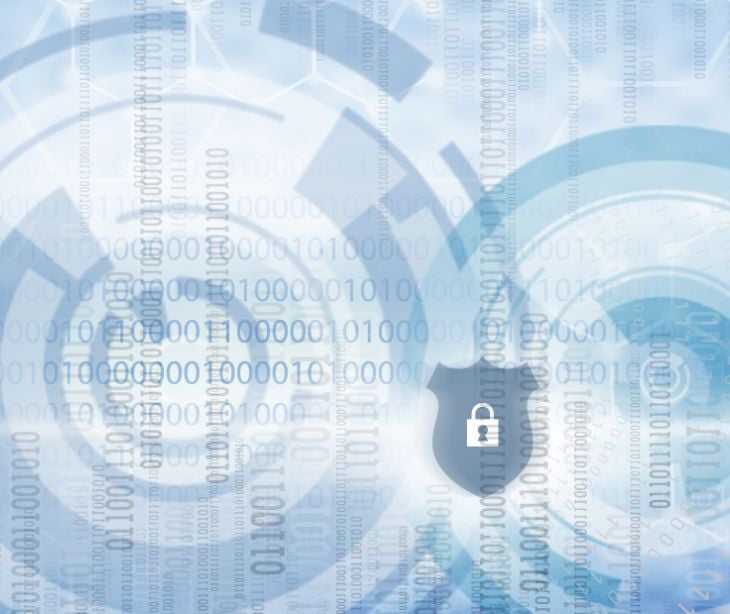
Organizations are susceptible to various threats that can compromise their systems and data. Many cyberattacks occur by manipulating an organization's employees, exploiting their negligence, or deceiving them into executing a phishing or social engineering scheme. Cybersecurity policies help safeguard an organization from cyber threats and maintain regulatory compliance. These policies can reduce an organization’s risk by training employees to avoid certain activities and can enable more effective incident response by defining protocols for detecting, preventing, and remediating them.
Importance of cybersecurity policies
“Cyberattacks have become more frequent than ever, especially since the start of the COVID-19 pandemic,” says Cyber Talents, a platform that categorizes cyber security experts based on their practical experience and abilities in diverse areas of cyber security.
Developing cybersecurity policies is crucial for several reasons, each contributing to the overall security, resilience, and operational integrity of a business. Here are the primary reasons:
Protection of sensitive information
- Data breach prevention: Policies help safeguard sensitive data (e.g., customer information, intellectual property) from unauthorized access and breaches.
- Data integrity and confidentiality: Ensuring that data remains accurate and is only accessible to authorized individuals.
Regulatory compliance
- Legal requirements: Many industries are subject to regulations that mandate specific security measures (e.g., GDPR, HIPAA, PCI-DSS).
- Avoiding penalties: Non-compliance can lead to significant fines and legal penalties.
Risk management
- Threat mitigation: Policies help identify, assess, and mitigate risks associated with cyber threats.
- Vulnerability management: Proactive measures to address vulnerabilities before they can be exploited.
Related: What is risk management in relation to healthcare?
Business continuity and resilience
- Disaster recovery: Ensuring that the business can quickly recover from cyber incidents and maintain operations.
- Minimizing downtime: Reducing the impact of cyber incidents on business operations.
Employee awareness and accountability
- Training and education: Policies provide a framework for educating employees about security best practices and their responsibilities.
- Clear guidelines: Defining acceptable use of company resources and expected behavior regarding security.
Read more: Is HIPAA employee awareness training enough?
Incident response and management
- Structured response: Clear procedures for responding to security incidents, minimizing damage and recovery time.
- Post-incident analysis: Learning from incidents to improve future security measures and responses.
Reputation management
- Trust and credibility: Demonstrating a commitment to security can enhance the business's reputation with customers, partners, and stakeholders.
- Avoiding negative publicity: Preventing breaches that can lead to loss of trust and negative media coverage.
Cost management
- Preventing financial loss: Reducing the risk of costly incidents, such as data breaches and ransomware attacks.
- Efficient resource allocation: Prioritizing security investments based on identified risks and policies.
Third-party risk management
- Vendor security: Ensuring third-party vendors comply with the organization's security standards.
- Supply chain protection: Mitigating risks associated with dependencies on external suppliers and partners.
See also: What is a supply chain attack and how can it be prevented?
Consistent security practices
- Standardization: Ensuring that all parts of the organization follow uniform security practices.
- Policy enforcement: Providing a basis for monitoring compliance and enforcing security measures.
Strategic planning
- Long-term security goals: Aligning cybersecurity initiatives with the overall business strategy and objectives.
- Resource planning: Identifying the resources needed to implement and maintain effective security measures.
Key components of a cybersecurity policy
A comprehensive cybersecurity policy for a business should address various aspects of security to protect the organization's information and technology assets. Here are the key components:
Purpose and scope
- Purpose: Clearly state the objectives of the cybersecurity policy, such as protecting sensitive information, ensuring regulatory compliance, and maintaining business continuity.
- Scope: Define the boundaries of the policy, including who it applies to (employees, contractors, third parties) and which systems and data are covered.
Roles and responsibilities
Define the responsibilities of various stakeholders, such as:
- IT security team: Implementation and monitoring of security measures.
- Employees: Adherence to security protocols and reporting incidents.
- Management: Providing resources and support for cybersecurity initiatives.
- Third-party vendors: Ensuring their practices align with the organization's security requirements.
Information security policies
- Data classification: Guidelines for classifying data based on sensitivity (e.g., public, internal, confidential, highly confidential).
- Data handling: Procedures for handling, storing, transmitting, and disposing of data according to its classification.
- Access control: Policies for granting, reviewing, and revoking access to systems and data, including the principle of least privilege.
Physical security
- Measures to protect physical access to IT infrastructure and sensitive information, such as secure facilities, access controls, and surveillance.
Read also: What physical safeguards are required by HIPAA?
Network security
Policies and procedures for securing the organization’s network, including:
- Firewalls and intrusion detection systems (IDS): Deployment and management.
- VPNs and remote access: Secure methods for remote connectivity.
- Wireless security: Protection of wireless networks.
Incident response
- Incident detection: Procedures for identifying potential security incidents.
- Incident reporting: Steps for reporting incidents internally and externally (if required).
- Incident management: Actions to be taken in response to incidents, including containment, eradication, and recovery.
- Post-incident review: Analyzing incidents to improve future response and security measures.
Go deeper: The 6 steps of incident response
Risk management
- Risk assessment: Regular evaluations of potential threats and vulnerabilities.
- Risk mitigation: Strategies to reduce risk, such as patch management, vulnerability management, and regular security audits.
Compliance and legal requirements
- Ensuring adherence to relevant laws, regulations, and standards (e.g., GDPR, HIPAA, PCI-DSS).
- Documenting compliance measures and maintaining records for audits.
Related: Guidelines for HIPAA compliant documentation and record retention
Training and awareness
- Regular training programs for employees on cybersecurity best practices.
- Awareness campaigns to keep security top-of-mind and inform about new threats.
Data backup and recovery
- Policies for regular data backups, storage of backups, and recovery procedures in case of data loss.
Learn more: How to develop a backup and recovery plan
Software and hardware management
- Guidelines for the acquisition, usage, maintenance, and disposal of software and hardware.
- Ensuring all systems are regularly updated and patched.
Monitoring and logging
- Continuous monitoring of networks and systems for suspicious activity.
- Logging access and usage of critical systems for auditing and forensic purposes.
Business continuity and disaster recovery
- Business continuity plan (BCP): Strategies to maintain operations during disruptive events.
- Disaster recovery plan (DRP): Procedures for restoring IT systems and data after a disaster.
Policy review and maintenance
- Regular review and update of the cybersecurity policy to reflect new threats, technologies, and business changes.
- Version control and documentation of changes to the policy.
Types of cybersecurity policies
Acceptable use policy (AUP)
- Purpose: Defines acceptable and unacceptable uses of company resources such as computers, internet, and email.
- Key Elements: Guidelines on internet usage, restrictions on accessing certain websites, email etiquette, and consequences of violations.
Access control policy
- Purpose: Establishes rules for granting, modifying, and revoking access to the organization’s systems and data.
- Key Elements: User authentication, authorization procedures, role-based access control, and review of access rights.
See also: Access control systems in healthcare for comprehensive security
Data protection and privacy policy
- Purpose: Ensures the protection of sensitive data and compliance with privacy regulations.
- Key Elements: Data classification, encryption, data retention, handling of personally identifiable information (PII), and data breach notification procedures.
Incident Response Policy
- Purpose: Outlines the procedures for identifying, reporting, and responding to security incidents.
- Key Elements: Incident detection, incident reporting, incident handling, communication plan, and post-incident analysis.
Network security policy
- Purpose: Defines the measures to protect the organization’s network infrastructure.
- Key Elements: Firewall configuration, intrusion detection/prevention systems, secure network design, and remote access protocols.
Password policy
- Purpose: Establishes requirements for creating, using, and managing passwords.
- Key Elements: Password complexity, expiration, change frequency, and storage guidelines.
Learn more: Password guidelines by NIST
Mobile device policy
- Purpose: Governs the use of mobile devices to access company resources.
- Key Elements: Device management, security requirements, acceptable use, and procedures for lost or stolen devices.
Email and communication policy
- Purpose: Regulates the use of email and other communication tools.
- Key Elements: Email security, phishing prevention, use of encryption, and guidelines for professional communication.
Learn more: HIPAA Compliant Email: The Definitive Guide
Vendor management policy
- Purpose: Ensures that third-party vendors comply with the organization’s security requirements.
- Key Elements: Vendor risk assessment, security requirements for vendors, contract clauses, and monitoring of vendor compliance.
Backup and recovery policy
- Purpose: Defines procedures for backing up data and recovering it in case of loss.
- Key Elements: Backup frequency, storage locations, data restoration procedures, and testing of backups.
Physical security policy
- Purpose: Protects physical access to IT infrastructure and sensitive information.
- Key Elements: Secure facility access, visitor management, surveillance, and hardware security measures.
BYOD (Bring Your Own Device) policy
- Purpose: Governs the use of personal devices for work purposes.
- Key Elements: Security requirements for personal devices, acceptable use, data access, and storage, and procedures for reporting lost or stolen devices.
Go deeper: Bring your own device (BYOD) policies in healthcare
Cloud security policy
- Purpose: Ensures secure use of cloud services and data protection in cloud environments.
- Key Elements: Cloud service provider selection, data encryption, access control, and monitoring of cloud resources.
Security awareness and training policy
- Purpose: Provides guidelines for educating employees about cybersecurity best practices.
- Key Elements: Training frequency, content, mandatory training sessions, and evaluation of training effectiveness.
Related: How to train healthcare staff on HIPAA compliance
Software and patch management policy
- Purpose: Ensures that all software and systems are up-to-date with the latest patches and updates.
- Key Elements: Patch scheduling, testing of patches, deployment procedures, and vulnerability management.
Go deeper: Developing a patch management policy
Disaster recovery policy
- Purpose: Outlines the procedures for recovering IT systems and data after a disaster.
- Key Elements: Recovery objectives, recovery procedures, roles and responsibilities, and regular testing of the disaster recovery plan.
Go deeper: How to develop a backup and recovery plan
Tips for implementing cybersecurity policies
Implementing cybersecurity policies effectively requires a structured approach and careful consideration of various factors to ensure they are practical, enforceable, and understood by all stakeholders. Here are some tips for successful implementation:
- Gain executive support: Effective policy implementation and maintenance require leadership buy-in and the acquisition of necessary budget, personnel, and technology through resource allocation.
- Define clear objectives and scope: The policies should clearly outline their goals, scope, and the systems and data covered by them, such as protecting sensitive data and ensuring compliance.
- Develop comprehensive policies: Develop comprehensive cybersecurity policies that cover all relevant aspects of your organization, using a consistent format for easy comprehension and reading.
- Involve key stakeholders: The policy development process must follow a collaborative approach, involving various departments and involving user input to identify practical challenges and enhance policy acceptance.
- Communicate policies effectively: Using various channels like emails, intranet, and meetings, create awareness campaigns for policies. Ensure they are written in plain, non-technical language for easy understanding.
- Provide training and education: Regular training sessions on cybersecurity policies and best practices are mandatory for all employees. Ongoing education through workshops, webinars, and security awareness programs must also be offered.
- Enforce policies consistently: Regularly monitor policy compliance and conduct audits to identify gaps, while clearly defining and enforcing consequences for non-compliance to maintain discipline.
- Use technology solutions: Implement automated policy enforcement tools like access control and intrusion detection/prevention systems, and use security information and event management (SIEM) systems for monitoring policy compliance activities.
- Regularly review and update policies: Regular policy reviews and a feedback loop help maintain relevance and effectiveness in the face of evolving threats.
- Document and communicate changes: Clearly document any changes to policies and communicate them promptly to all affected parties. Additionally, utilizing version control will enable tracking of changes and guarantee employees are knowledgeable regarding the most up-to-date policies.
- Ensure policy integration: Integrate cybersecurity policies with existing business processes for seamless implementation and ensure cross-departmental coordination for consistent policy application across the organization.
- Measure and improve: Define KPIs and metrics to measure cybersecurity policy effectiveness, and use insights from monitoring and measurement to continuously improve policies and their implementation.
FAQs
Who should be involved in creating our cybersecurity policies?
Key stakeholders should include IT and security teams, executive management, legal and compliance departments, HR, and representatives from various business units. Employee feedback is also valuable.
What are the consequences of not having cybersecurity policies?
Without cybersecurity policies, businesses face increased risks of data breaches, financial losses, regulatory fines, legal penalties, reputational damage, and operational disruptions.
What are some common challenges in implementing cybersecurity policies?
Common challenges include lack of executive support, insufficient resources, employee resistance, lack of awareness, integrating policies with business processes, and keeping policies up-to-date with evolving threats.
Subscribe to Paubox Weekly
Every Friday we'll bring you the most important news from Paubox. Our aim is to make you smarter, faster.




